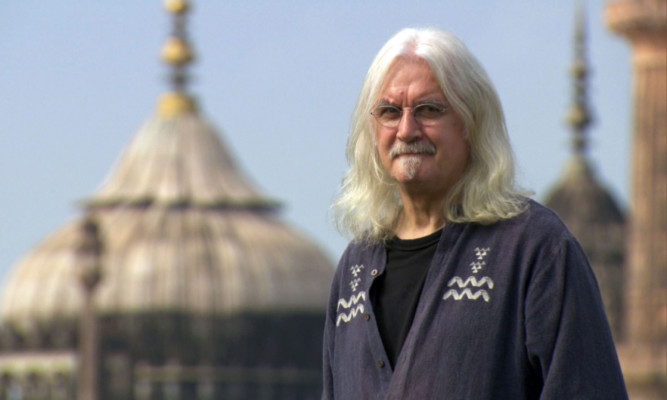
The new series of Who Do You Think You Are? includes a hunt for the Glasgow comedian’s ancestry.
It started a decade ago with Bill Oddie discovering surprising things about his past.
Now Who Do You Think You Are? is celebrating its place as one of the BBC’s perennial favourites with a special look back.
The hour-long programme will kick off the new series, the milestone 10th, which includes the 100th episode featuring a hunt for Billy Connolly’s ancestry.
The Big Yin may seem to have Scotland riveted into his core as deeply as those in the Glasgow shipyards where he served his time. But 71-year-old Billy, who has Parkinson’s Disease and has had treatment for prostate cancer, discovers his family’s past is considerably more exotic.
Over the years the series has had astonishing revelations, shocked reactions and no shortage of tears.
None were more surprising than those shed by former Newsnight presenter Jeremy Paxman. The seemingly implacable tough-as-they-come interviewer cried over the plight of his great grandparents.
“I was surprised by how I reacted and I don’t know what one learns from that, really,” he admits. “The fact that it’s someone in your family gives it a life that it would never acquire if you simply read about it.
“When you discover somebody’s life story and the adversity they faced, of course it has an effect on you and I was terribly moved, as was evident.”
Connolly’s not the only one whose past is further from Scots shores than expected.
“I was sure with my name and the number of people who seem to accept me as a Scot, that that was where my time on the programme would be spent,” reveals comic and impressionist Alistair McGowan, who discovered Indian roots.
“Meeting all the other McGowan’s in Allahabad was extraordinary.
“They were all in that one little enclave.”
And Ainsley Harriet says he found the opposite.
“You know, there’s John Hurt thinking he was Irish or my friend Alistair who’s thinking ‘I’m Scottish’, and I’m more Scottish than Alistair!”
Those taking part never quite know how the pieces of the jigsaw will fit together.
In the case of Alexander Armstrong, the completed picture showed he was descended from Edward III and William the Conqueror.
“People who followed me on Twitter said how smug I looked when I discovered I had royal connections.”
Producer Kathryn Taylor says: “My favourite bit is always the moment when the last crucial piece of research falls into place.”
The series proper starts this week with Julie Walters and later episodes feature Mrs Brown’s Boys star Brendan O’Carroll and Bake Off’s Mary Berry.
Who Do You Think You Are? Live is at Glasgow’s SECC from August 29 to 31.

Enjoy the convenience of having The Sunday Post delivered as a digital ePaper straight to your smartphone, tablet or computer.
Subscribe for only £5.49 a month and enjoy all the benefits of the printed paper as a digital replica.
Subscribe